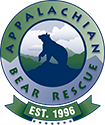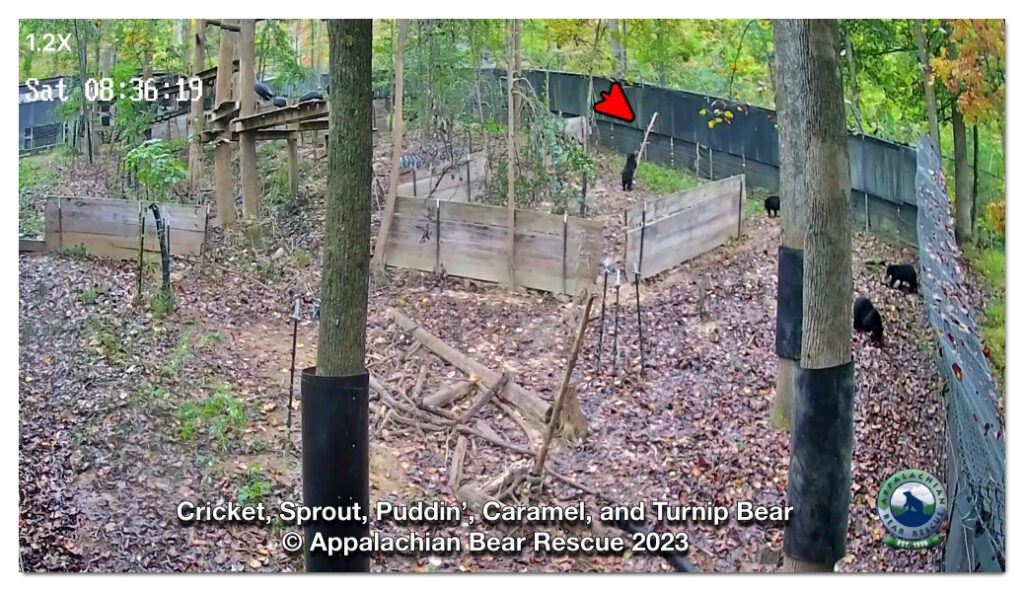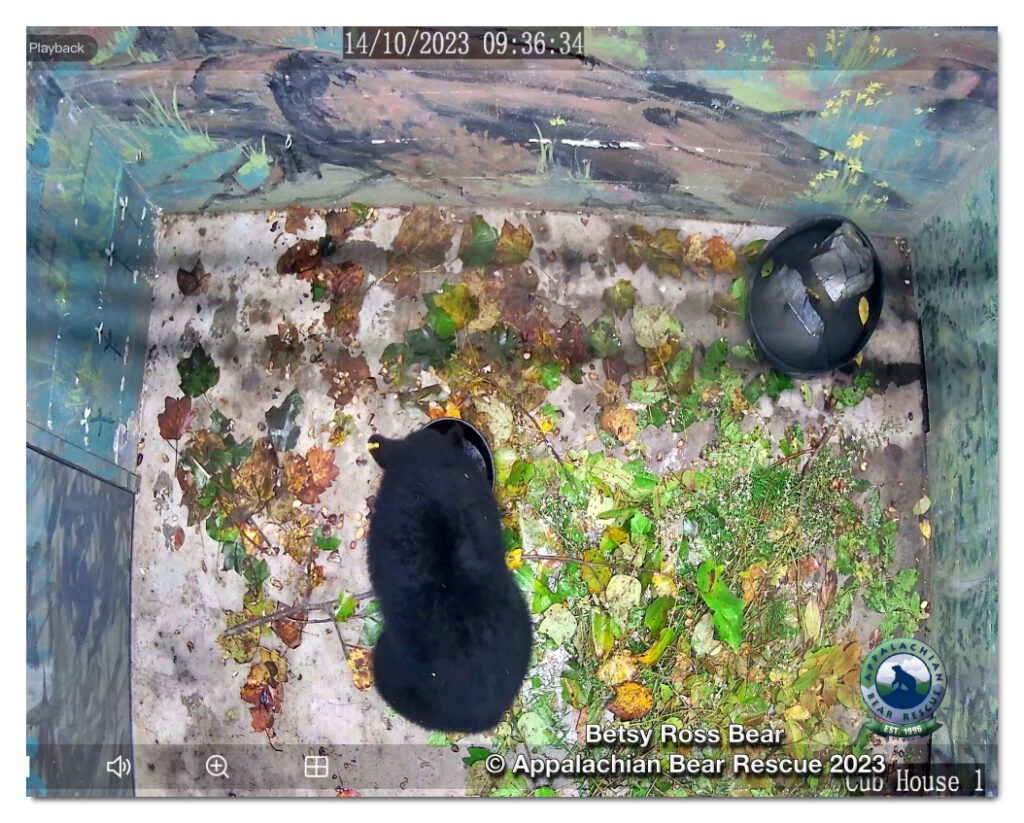After learning from the UT vets what the actual infection is (we posted the Zoom call with them yesterday, in case you didn’t see it) the curators feel a bit better, knowing what the adversary is.As we have done before, we will take the excellent information from the Facebook page as a synopsis.
Tests for distemper were negative, while results from tests for Covid are still pending.
Tests for various fungal suspects were negative and there seems to be no evidence of a water-borne disease.
However, a specific strain of Streptococcus bacteria (Streptococcus gallinaceus ) was found in all but one sick bear. It was also found in abundance in the deceased bears (Flapjack and Burrito). This isn’t the same strep bacteria that affects humans; this bacteria seems specific to domestic birds, like chickens and turkeys. Wild birds, who call ABR home, don’t carry this bacteria, nor were our bears made sick from Avian flu (a virus) often carried by wild birds.
Happily, the antibiotics our cubs are taking are the right drugs to fight this bacteria and the little bears are responding to treatment. 


So if this particular strain of strep bacteria is confined to chickens, how did our cubs get it? We don’t feed our bears chicken or turkey, but we’re having everything we do feed them tested, including the commercial chicken flavor baby food we feed our youngest and sickest cubs. This is the same baby food given to human infants, so it’s highly unlikely to be the source of the bacteria. All the cubs at our facility are fed the same type of food, yet only the cubs in Wild Enclosure #4 got sick.
Our focus turned to the mother of Martha Washington and Betsy Ross, who was shot while raiding a chicken coop. UTCVM has tissue samples of the late mother and will be testing them for signs of strep bacteria. If the chickens were infected, Martha and Betsy could have eaten them too, or contracted the bacteria from their mother during normal grooming and bonding. The sisters arrived on July 4, 2023, and were the last cubs introduced into the group that became ill. We will continue to work with State biologists and UTCVM to test this scenario while keeping our minds open to other possibilities.
The doctors from UTCVM didn’t think giving antibiotics as a prophylactic to our other cubs is necessary; the bacteria isn’t air-born, doesn’t survive long outside the body, and none of the cubs are exhibiting symptoms. We’re grateful to UTCVM for their continuing help and guidance and indebted to you, our friends, for your constant support. 
So on to the current state of things at ABR.
In Wild Enclosure #1, the cubs are puzzled by the Springy Tree.
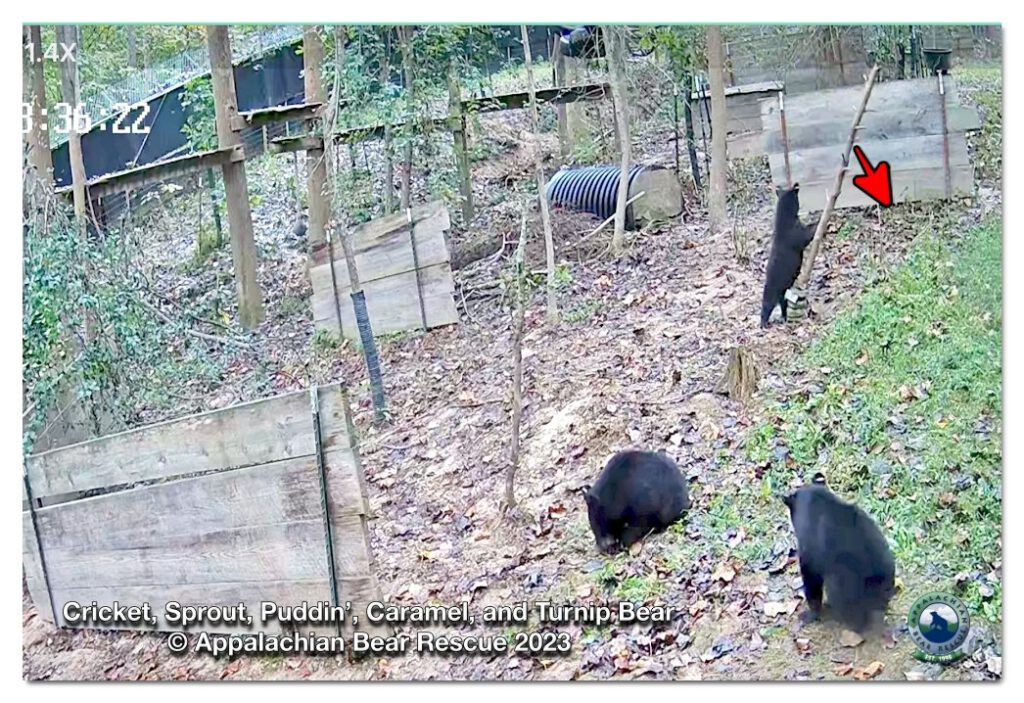
When it’s pushed down,it bounces back!
They don’t understand this mystery!
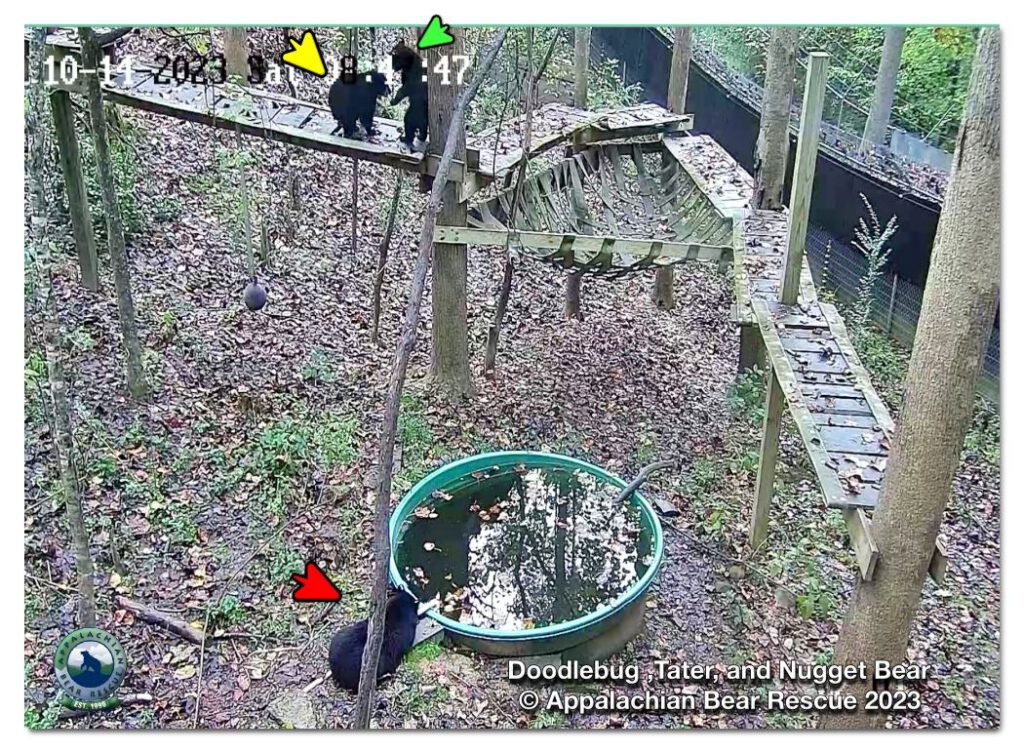
In Enclosure #2, two cubs are sparring on the platform while the third checks the plumbing.
Martha and Betsy are doing better.
They have two rooms in The Cub House.
Tamale seems improved. He isn’t coughing as much.
He has two rooms in Hartley House.
Poor Thumper is off his feed, which is unusual for him.

The curators are considering moving him in with Tamale, thinking that perhaps he needs companionship as much as food. They will decide in the next day or two. Stay tuned.
